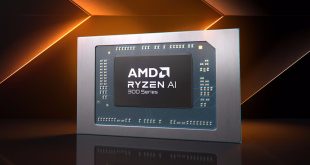While IDC and Gartner battle it out to produce the best overall estimates of the market in terms of how many units will ship into the various markets, other analysts focus on a specific set of components within those systems – and use that as a way to predict overall market trends. IHS is one of the market leaders in this ‘nose to beach and count the sand grains' approach. KitGuru peruses the latest data from IHS with a fine tooth comb and magnifying glass.
Sandwich makers predict growth while farmers say that wheat production will shrink.
It's just an example, but key to the different ways in which market experts analyse the various markets. Sandwiches need bread which, in turn needs wheat. So if you wanted to make predictions – would you approach it from ‘How many people say they will buy sandwiches?' or ‘How much bread can be made from the predicted wheat growth figures?'.
IHS bought iSuppli at the end of 2010, bringing together the analysts with the data gatherers. At the time, IHS CEO Jerre Stead said “Taking advantage of existing IHS expertise, the acquisition of iSuppli will help us develop new products and services for a variety of the vertical markets we serve. In addition, we are acquiring an important asset base of analysts and researchers, as well as customers across Europe, in China, Japan, Korea and Taiwan”.
In other words, the iSuppli network would give IHS incredible detail in the key markets around semi conductors.
While telling us that global chip sales will decrease to something like $303 billion for 2012 (they were $310 billion in 2011), IHS is prepared to go on record to say that, with a few small changes, 2013 could see growth of more than 8%.
If IHS is right, then the semiconductor market could be looking at revenue for 2013 in the $327 billion range – which would be a real-world-over-two-years increase of something like 6% from 2011. Not bad.
In terms of the specific runners and riders for this journey, it's plain to see which companies are gliding across silicon valley on the wings of a powerful dragon and which need to bulldoze expectations if they are to post sensible increases.

KitGuru says: In real terms, the increase/decrease in the value of the market has as much to do with commoditisation as anything else. Actual chip shipments could increase dramatically, but that does not help the chip makers if market pressures are forcing the price of each chip down and down. The long term challenge becomes “How the hell do we pay for enough R&D to stay competitive when we don't have the revenue?”
Comment below or in the KitGuru forums.
 KitGuru KitGuru.net – Tech News | Hardware News | Hardware Reviews | IOS | Mobile | Gaming | Graphics Cards
KitGuru KitGuru.net – Tech News | Hardware News | Hardware Reviews | IOS | Mobile | Gaming | Graphics Cards


